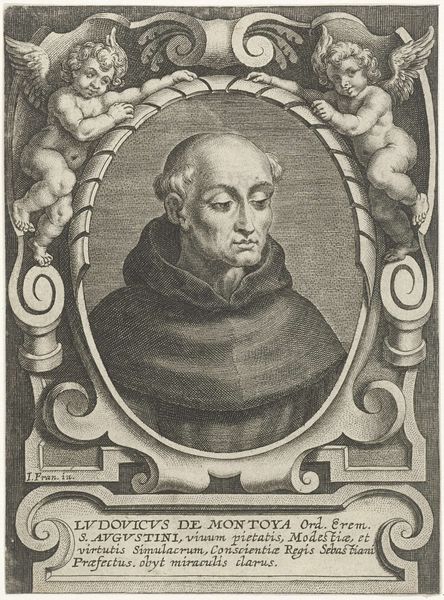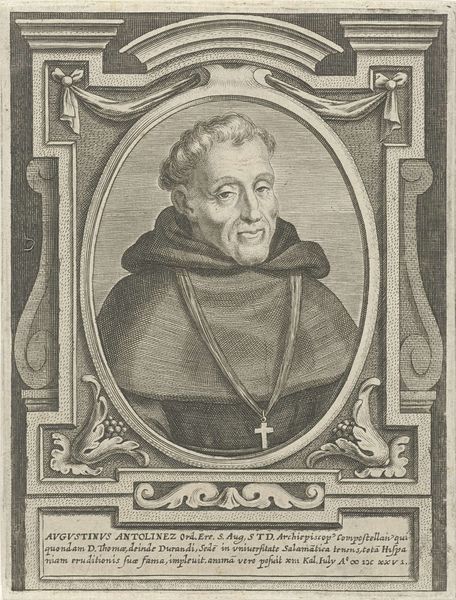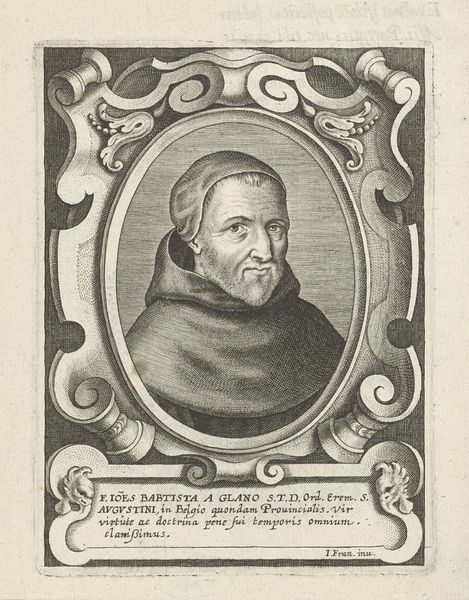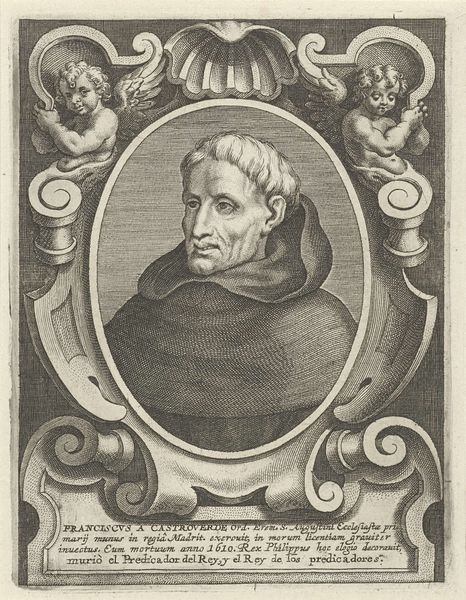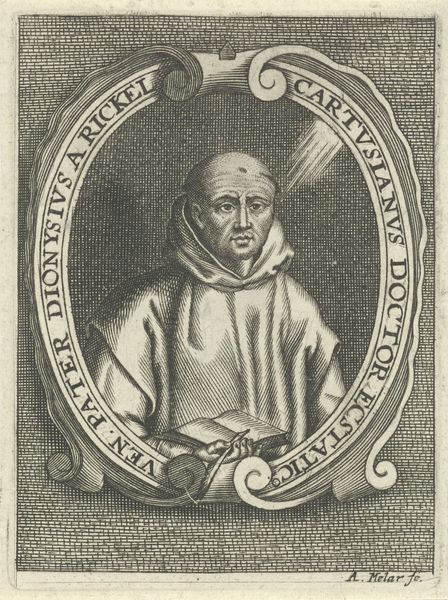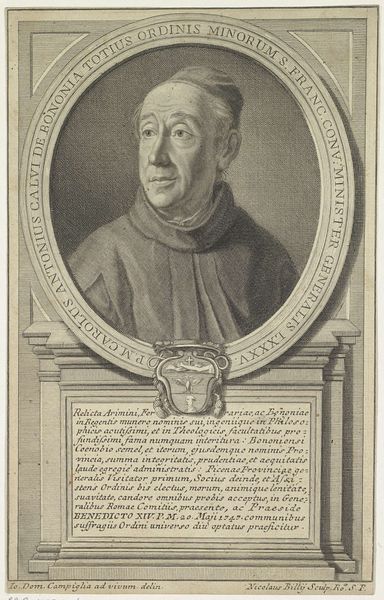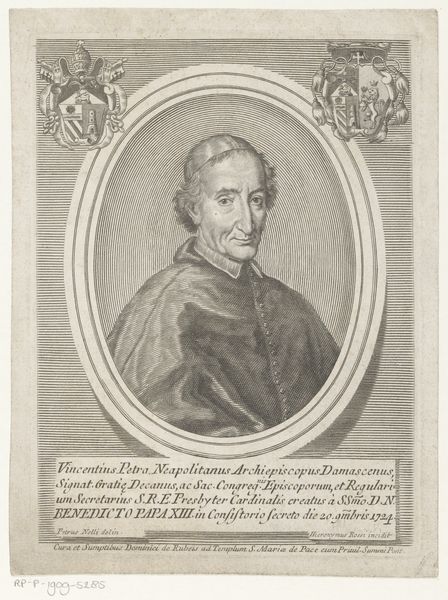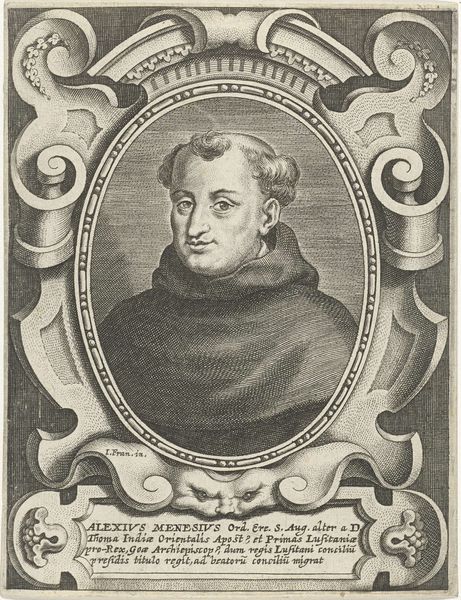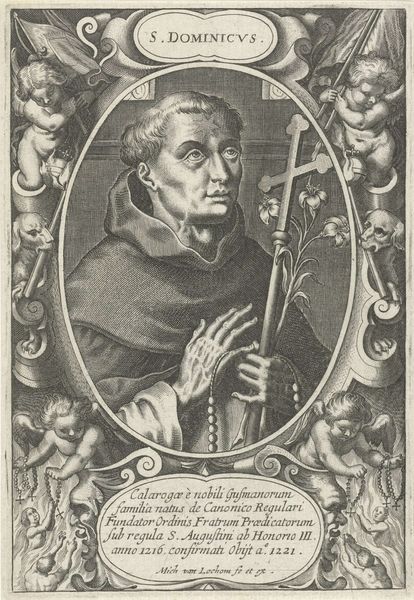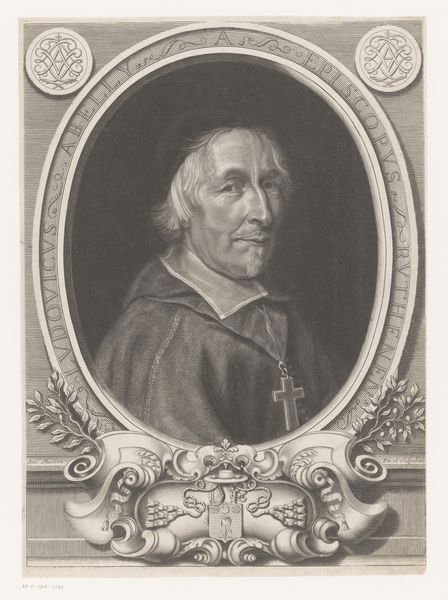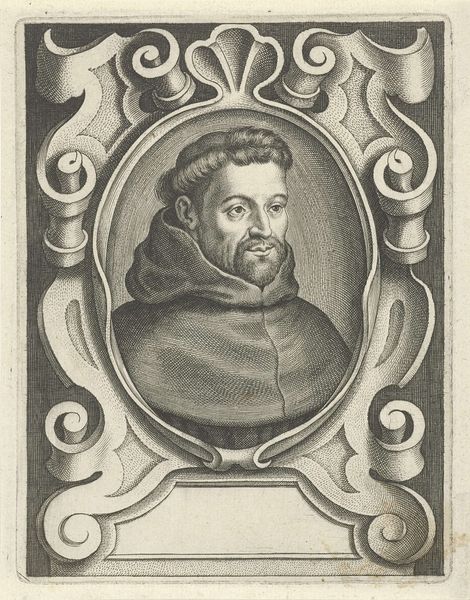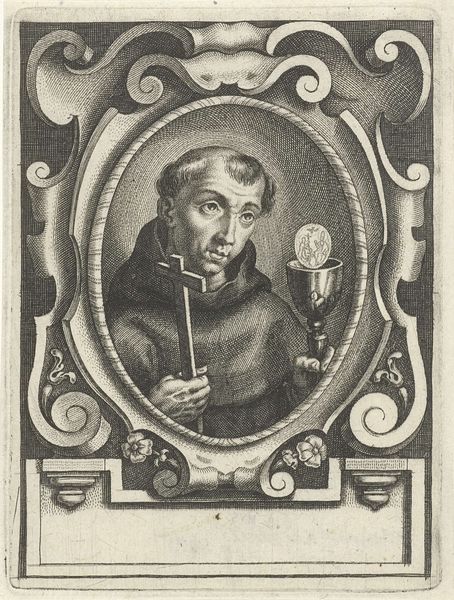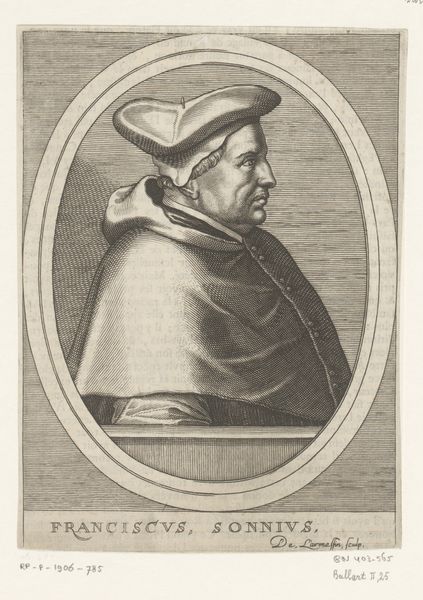
print, engraving
#
portrait
#
baroque
# print
#
old engraving style
#
caricature
#
form
#
line
#
academic-art
#
engraving
Dimensions: height 135 mm, width 105 mm
Copyright: Rijks Museum: Open Domain
Editor: Here we have Cornelis Galle I's 1636 engraving, "Portret van de Augustijn Gregorius Ariminensis," housed at the Rijksmuseum. The subject's rather stern expression, coupled with the starkness of the engraving, makes me think about the rigidity of form in Baroque portraiture. What do you see in this piece? Curator: Formally, the image presents a fascinating interplay of line and shape. The meticulous rendering of Ariminensis' features is contrasted against the geometric structure of the ornamental frame. Consider the curvature of the oval versus the sharp angles of its rectangular base. Editor: So, it's less about the subject himself and more about the shapes within the image? Curator: Precisely. Notice how the artist employs hatching and cross-hatching to define volume and create tonal variation, moving past mere mimesis to create dynamic visual contrasts and formal harmony. The engraving itself is an exploration of contrasts. What of the tension between the realism in the rendering and the abstract nature of line? Editor: The texture created by the lines does bring it to life... So it’s about noticing how the shapes and the line-work work together to create something engaging, and that becomes the art? Curator: Indeed. This piece offers a clear demonstration of how an artist can utilize formal elements, the careful composition of lines and forms, to generate a compelling image that goes beyond simply representing a figure. This creates a sophisticated and captivating visual experience. Editor: I see that now. Looking at art through its construction – through lines and shapes – reveals details I would have otherwise missed! Curator: And this attention to form, ultimately, helps unlock deeper meaning and appreciation.
Comments
No comments
Be the first to comment and join the conversation on the ultimate creative platform.
